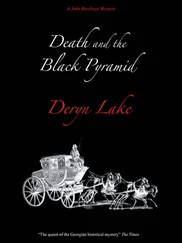But the idea that the disease might be passed directly from man to man was not ruled out by belief in a corrupted atmosphere. A few, mainly among the Arabs, rejected the possibility of infection on religious grounds but for most people the evidence of their own eyes was too strong. Some effort was made to establish a link between the two theories, as by those who argued that a victim of the plague might radiate infection in his immediate vicinity by generating a form of personal and highly localized miasma which he carried, like a halo, around his head. {29} 29 29 Hirst, The Conquest of Plague, Oxford, 1953, p. 28.
But such refinements of logic were not much considered and, in general, people were content to note that the disease could pass from victim to victim with terrifying speed and did not worry too much about the philosophical or scientific basis for such a phenomenon. The evidence was overwhelming. It is noteworthy that it was an Arab, Ibn al Khatīb, who defied his religion’s teaching and stated flatly: ‘The existence of infection is firmly established by experience, research, mental perception, autopsy and authentic knowledge of fact…’
It does indeed appear that, to the medieval mind, the speed with which the Black Death passed from man to man was its most alarming feature. ‘The contagious nature of the disease,’ wrote one chronicler, {30} 30 30 De Smet, op. cit., Breve Chronicon, Vol. III, p.15.
‘is indeed the most terrible of all the terrors, for when anyone who is infected by it dies, all who see him in his sickness, or visit him, or do any business with him, or even carry him to the grave, quickly follow him thither, and there is no known means of protection.’
Boccaccio was particularly struck by the perils of infection:
Moreover, the virulence of the pest was the greater by reason that intercourse was apt to convey it from the sick to the whole, just as fire devours things dry or greasy when they are brought close to it. Nay, the evil went yet further, for not merely by speech or association with the sick was the malady communicated to the healthy with consequent peril of common death, but any that touched the clothes of the sick or aught else that had been touched or used by them, seemed thereby to contract the disease.
Boccaccio himself claims to have seen a couple of pigs in the street digging their snouts into the rags of a poor man who had just died. They smelt them, tossed them to and fro between their teeth, then almost immediately ran round and round, and, without more ado, tumbled dead to the ground. The inevitable result of this well-founded if somewhat exaggerated terror of infection was that the victims of the plague more often than not found themselves abandoned to their fate and even those who had endured some slight brush with the disease were likely to be shunned by their fellow-men. Security lay only in total isolation. If this were impracticable then at least contact with the plague-struck should be avoided.
It was quickly realized that there was no need to touch a sick man to be infected. Most people believed that the disease passed by breath but other theories existed. Looks, according to a physician from Montpellier, could kill. {31} 31 31 ‘Tractatus de epidemia’, Michon, Documents inédits, op. cit., p. 46.
‘Instantaneous death occurs when the aerial spirit escaping from the eyes of the sick man strikes the eyes of a healthy person standing near and looking at the sick, especially when the latter are in agony; for then the poisonous nature of that member passes from one to the other, killing the other.’ But swift and terrible though the infection might be, it was also evident that it varied in its dreadfulness from place to place and time to time. On one occasion a whole community would be obliterated, on another there would only be one or two victims and the rest would survive unscathed; here a family would die within twenty-four hours, there the father would die one day, a child three weeks later, another child after a month and then there would be no further victim. In general this was accepted apathetically as yet another of those inexplicable phenomena of which the Black Death was composed. A few doctors noted that the infection seemed more virulent where there was spitting of blood. Only Gui de Chauliac went on to deduce that, of the two forms of the disease which were apparent, one was notably more infectious than the other.
* * *
Enjoying as we do the immense superiority of a generation which has devised means of mass destruction more effective even than those inflicted by nature on our ancestors, it is easy and tempting to deride their inability to understand the calamity which had overtaken them. It would, perhaps, be more fitting to wonder at the courage and wisdom of men like Gui de Chauliac who saw their civilization apparently doomed by a hideous and inexplicable calamity and could still observe its development with scientific objectivity, draw reasonable deductions about its habits and likely course and do their best to curb its ravages. It is also sobering to reflect that only within the last century have we learned enough to detect the origins and plot the course of the epidemics and that, even today, quick and expensive action is necessary if they are to be checked before they do great damage. It is much less than a hundred years since the sophisticated and immensely learned Dr Creighton concluded positively that the source of the Black Death lay in the mounds of dead left unburied by the successive disasters which had overtaken China. He invoked cadaveric poisoning as the reason for the high death rate among priests and monks: priests tended to live near the village churchyard while: ‘Within the monastery walls were buried not only generations of monks, but often the bodies of princes, of notables of the surrounding country, and of great ecclesiastics.’ {32} 32 32 C. Creighton, History of Epidemics in Britain, Cambridge, 1891, p. 175.
Today we smile politely at Dr Creighton’s blunders; it is reasonable to wonder whether a hundred years from now the theories of today may not seem equally ridiculous. On the whole it is unlikely that they will. Undoubtedly further discoveries will be made, dark corners illuminated, concepts amended or refined. But the techniques of scientific investigation are now sufficiently evolved to have established as a fact the main elements of the Black Death and to explain authoritatively the cycle of its activity. {33} 33 33 The most useful studies of bubonic plague which make special reference to the Black Death are Greenwood’s Epidemics and Crowd Diseases, Pollitzer’s Plague and Hirst’s The Conquest of Plague.
That the Black Death, in its original form, was bubonic plague has been commonly accepted for many years. Bubonic plague is endemic to certain remote areas of the world; those which have been identified with reasonable certainty are Uganda, Western Arabia, Kurdistan, Northern India and the Gobi Desert. From time to time it erupts there in the form of minor, localized epidemics. Far more rarely it breaks its bounds and surges forth as one of the great pandemics. Unlike influenza, bubonic plague in such a mood moves slowly, taking ten years or more to run its course across the world. When it comes, it comes to stay. The high mortality of its initial impact is followed by a long period in which it lies endemic, a period interspersed with occasional epidemics which gradually die away in frequency and violence. Finally, perhaps several hundred years after the original outbreak, the plague vanishes.
Three such pandemics have been recorded. The first, beginning in Arabia, reached Egypt in the year 542. It ravaged and perhaps even fatally weakened the Roman Empire of Justinian and moved on across Europe to England, where it was known as the Plague of Cadwalader’s Time, and Ireland, which it laid waste in 664. The second pandemic was that of the Black Death. One of its parting flourishes was the Great Plague of London in 1665; it seems to have died out in the seventeenth century. Finally came the pandemic which started in 1892 in Yunnan and reached Bombay in 1896. In India alone it is believed to have killed some six million people. It made a brief and mercifully unsuccessful foray into Suffolk in 1910, finding only a handful of victims. Quite recently it has made itself felt in the Azores and parts of South America. In many parts of the world it has still to run its course.
Читать дальше












